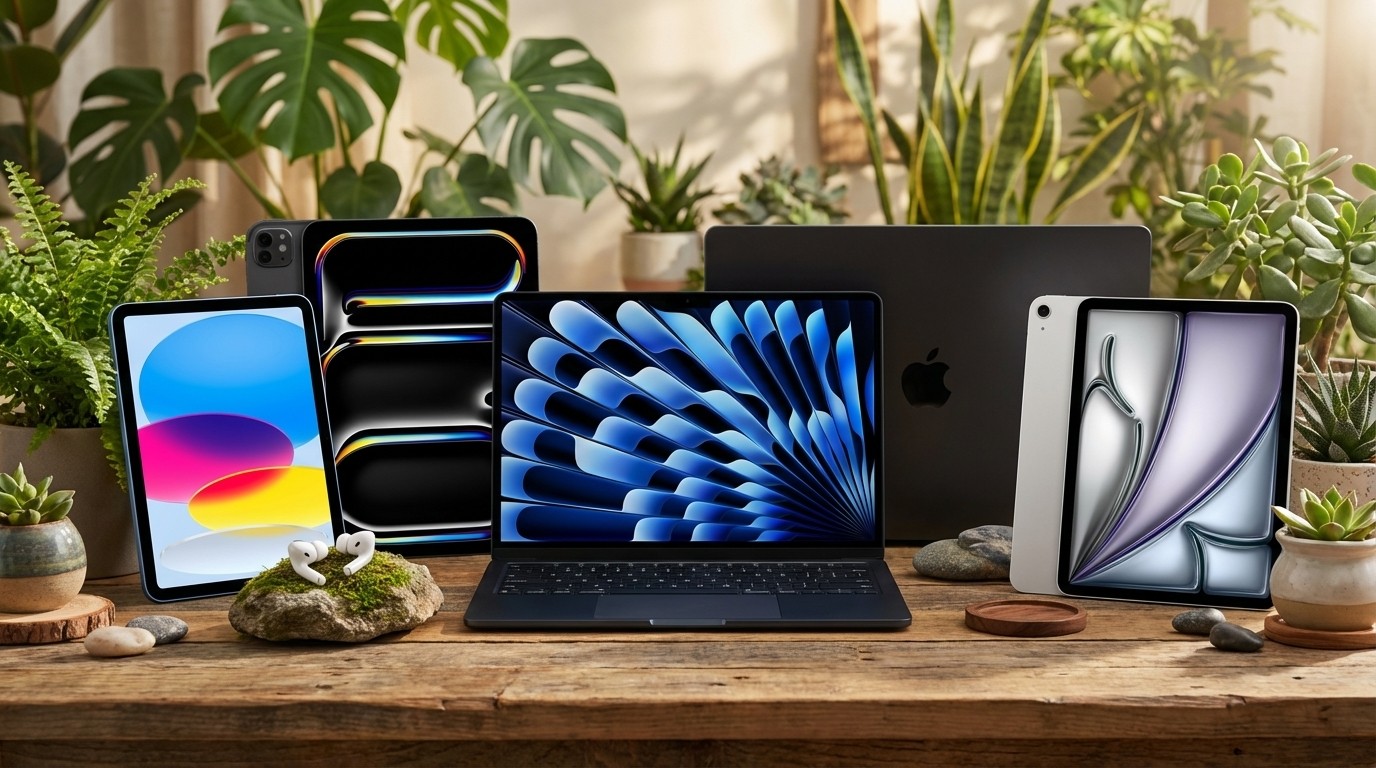The best mechanical pencils for drawing and writing
Our creative and design experts help you pick out the best mechanical pencils for drawing and writing enabling you to create with precision.
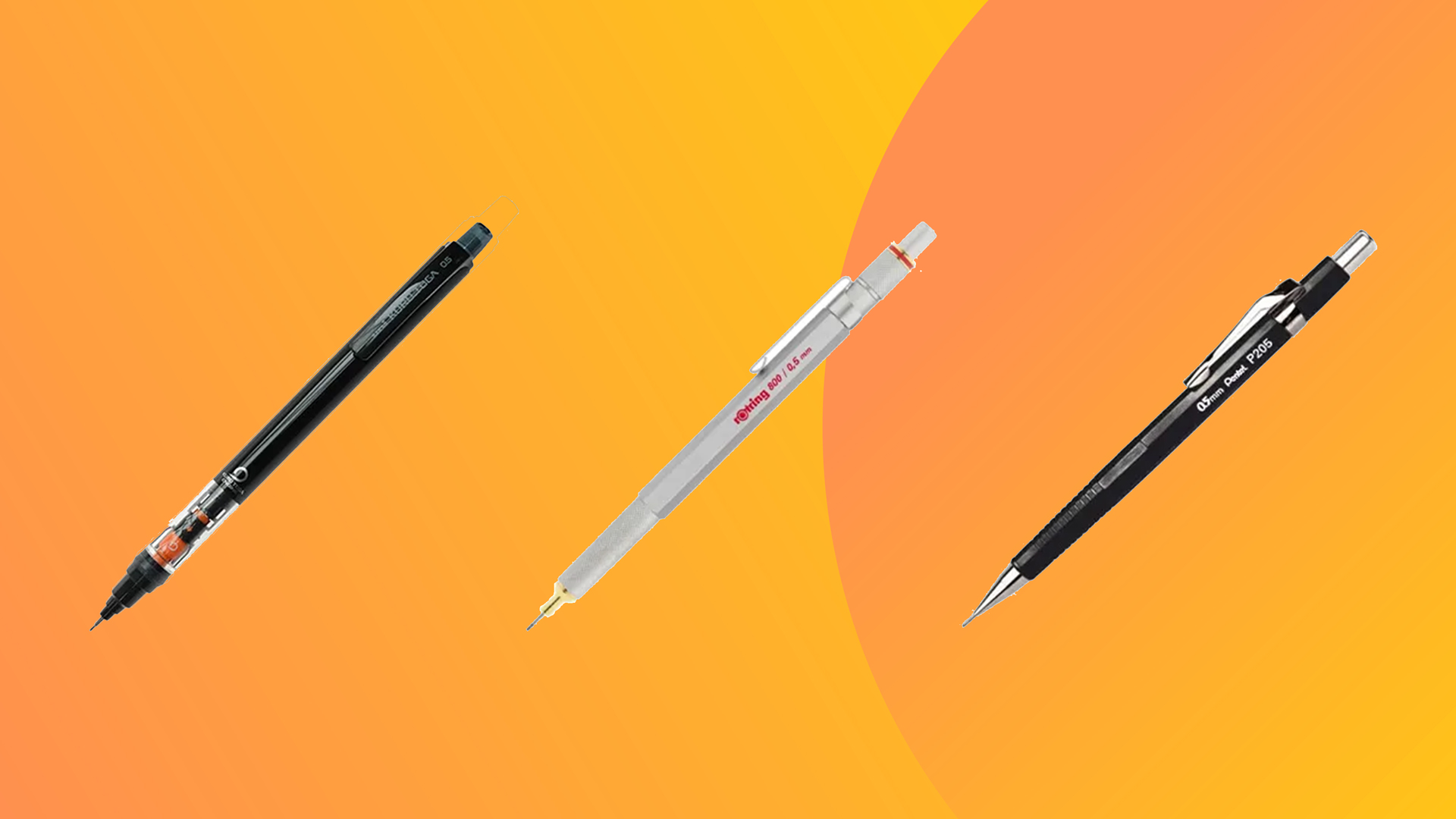
The best mechanical pencils for drawing and writing enable you to create art and handwritten gifts and cards with extra precision. With mechanical pencils, there's no need for a pencil sharpener. Instead the graphite (or 'lead') sits in a well inside the pencil. As it wears down, you can keep extending it simply by clicking a button. Then when it's all used up, you just insert a replacement.
Crucially, the pencil itself stays the same length, unlike wooden pencils which get shorter as you sharpen them (even with one of the best pencil sharpeners). And because replacement leads are cheap it saves you money over time, because you won't have to buy new pencils.
In this article, we've gathered together the best mechanical pencils on the market today, selected from a mixture of recommendations from artists as well as extensive internet research. To further build up your artist toolkit, don't miss our guides to the best pencils of all kinds, the best pens for artists, and for expressive work and special effects, the best watercolour pencils.
The best mechanical pencils for drawing

Lead: 0.5 mm
Action: Pipe slide
+ Consistently sharp lead
+ Clever design
– 0.7mm is hard to find
On many mechanical pencils, the lead wears down on one side, forming a slanted, wedge-shaped tip, which can potentially cause variations in line thickness. The Kurutoga Pipe Slide from Japanese brand Uni sidesteps this problem with a clever mechanism that continually rotates the pencil lead as you draw. This allows for a uniform wearing of the lead, and cleaner and more consistent lines as a result.

Lead: 0.3mm, 0.5mm, 0.7mm, 0.9mm
Action: Push-top button
+ Value for money
+ Good all-rounder
– Short-lived eraser
Looking for a decent mechanical pencil, but short on funds? Then here's our top recommendation. The Pentel 200 is a quality pencil that's expertly engineered for drawing, drafting or writing, but it doesn't cost much at all. Each one comes with Super Hi Polymer HB leads and an eraser. The set covers a range of lead thicknesses from 0.3mm to 0.9mm. And the fact that you're getting four pencils for such a low price represents fantastic value.

Lead: 0.5mm or 0.7mm
Action: Twist and click
+ High-end engineering
+ Luxury feel
– A costly pencil
If you mainly use a pencil for sketching, rather than finished work, then check out the Rotring 800. This high-quality pencil gives you precise, consistent lines and has a luxurious feel that makes it perfect for sketchbooks. Weighing 91g, it's nice and solid, and feels comfortable in the hand. Its non-slip metal grip 'twist and click' retractable mechanism makes it easy to use, and its hexagonal shape makes it less likely to slide off your desk. It's on the pricey side, but its superior craftsmanship makes it worth the extra outlay.

Lead: 0.3, 0.5, 0.7 or 0.9mm
Action: Button
+ Built-in lead indicator
+ Range of diameters
– 0.3mm is hard to find
Whether you work in architecture, design, engineering, or any other role that requires drafting, we recommend the excellent Pentel Graphgear 500. Its weight feels good in the hand, and it's light enough to be comfortable over long sessions. It's lovely and accurate, too. With a 4mm fixed sleeve, metallic-mesh grip and a barrel weighted at your fingertips, this pencil is designed to help you draw precisely.
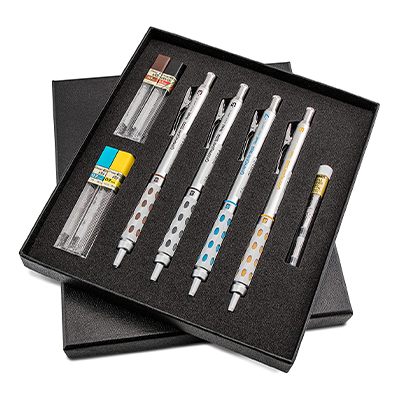
Lead: 0.3mm / 0.5mm / 0.7mm / 0.9mm
Action: Click-off cap
+ 12 Piece Set
+ Excellent quality
– Light in the hand
The GraphGear 1000 Premium Mechanical Pencil Set is an excellent gift for anyone who loves drawing. The pens themselves are superbly built and come with neat colour-coding so you know which lead is in each pencil, just like the Pentel Graphgear 500 (to the right). While these mechanical pencils are sturdy and comfortable, it should be noted they are rather light.
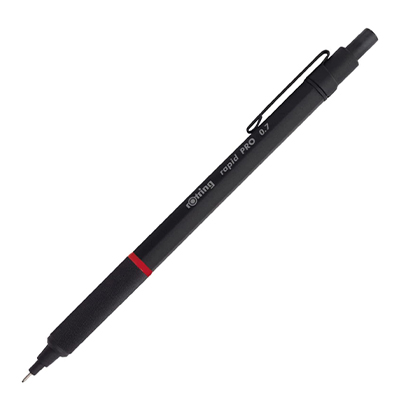
Lead: 0.7mm
Action: Button
+ Heavy and accurate
+ 2 year warranty
– Too chunky for some
The Rotring Rapid Pro drafting pencil is an all-metal, weighted self-sharpening mechanical pencil that impresses. It contains a number of eye-catching features, including a unique cushioned lead mechanism that avoids breakage and a 'knurled' grip for comfort. If you're after a mechanical pencil built to last and like your pencils a little heavier for greater control, then the Rotring Rapid Pro is a great choice. It even comes with a two-year warranty.
The best mechanical pencils for writing
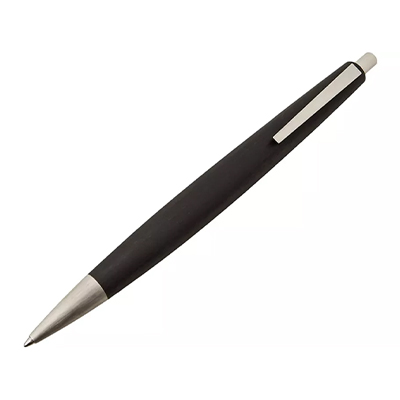
Lead: 0.5 or 0.7mm
Action: Button
+ Produces smooth lines
+ Highly durable
– An expensive choice
This is our number one choice when it comes to mechancial pencils for writing. Based on the well-known fountain pen designed by Gerd A. Müller, the LAMY 2000 is a true modern classic, and we love it. It's comfortable to hold and use, and it produces smooth, consistent writing. Its weight of 18.1g, meanwhile, strikes the perfect balance between being light enough to write with, but solid enough to feel sturdy. Reliable and durable, this is a pencil you expect to last for years.
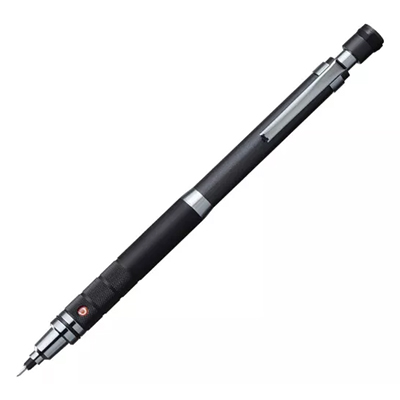
Lead: 0.5mm
Action: Button
+ Self-sharpening
+ Great value
– A little light
Looking for a bargain? If you want a quality pencil for writing, but can't stretch to the high price of the LAMY 2000, check out the Uni Kurutoga Roulette, which offer truly excellent value. Its sophisticated design means that it sharpens the lead consistently as you write. This gives you an even stroke width that keeps your handwriting effortlessly neat and polished. This pencil is also very comfortable to hold, with a nicely balanced weight and a knurled metal finger-plate for better grip.
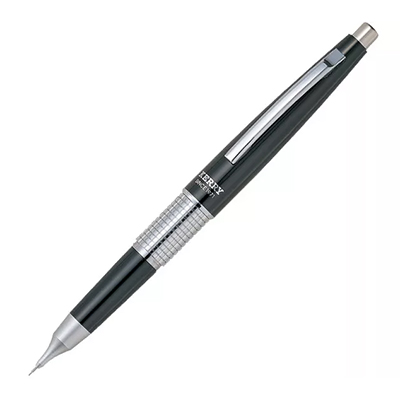
Lead: 0.5mm
Action: Button
+ Excellent quality
+ Strong lead
– Pencil cap is loose
If you want a pencil for writing professionally, the Pentel Sharp Kerry Mechanical Pencil 0.5mm offers top quality craftsmanship without breaking the bank. This pencil is handcrafted using watchmakers' tools for precision, beauty and accuracy. It also has a solid tip that means you'll very rarely, if ever, break the lead. Plus, the removable cap makes it nice and portable. We think this mechanical pencil would also make a great gift.
How to choose mechanical pencils
When choosing a mechanical pencil, you need to think about what you're going to be using it for. Is it mainly for writing or drawing, and do you want fine or thicker lines? Will you be using it for long periods of time, in which case you'll want the most comfortable pencil available?
Other things to consider are weight and durability of leads, although we've only chosen pencils with durable leads in our selection. Cost is of course also a factor, and you should also factor in the cost of any replacement leads.
How we test mechanical pencils
This guide was collated using recommendations from artists and designers. The pencils were tested through daily writing/drawing use, with their pros and cons noted by the artists we spoke to. We have also used user reviews from the internet to corroborate recommendations and add more detail where necessary.
The best mechanical pencils FAQ
How do mechanical pencils work?
With a normal pencil, once the graphite tip (commonly referred to as 'lead') has blunted, you need to sharpen it using a pencil sharpener. A mechanical pencil, in contrast, uses an internal spring to push the lead upwards into the barrel, when you press the button at the other end. When the lead has been fully used, you then insert a new replacement.
Why are mechanical pencils better than wooden pencils?
The main benefit of mechanical pencils is they don't need sharpening. This saves you a lot of hassle and mess. More importantly, it means mechanical pencils provide more consistent lines, enabling you to create more precise and accurate drawings, and neater handwriting. The fine lines also tend to be easier to erase. And of course, you don't have to carry a sharpener with you all the time.
Why are mechanical pencils more expensive?
Mechanical pencils are generally more expensive than wooden ones, but bear in mind that the latter won't last very long. As long as you're happy to keep refilling the lead in a mechanical pencil, which doesn't cost very much at all, then it should last for years. So if you take the initial cost of a mechanical pencil, and divide that by the number of wooden pencils you'd probably go through over a similar time period, it starts to look like very good value indeed.
What are mechanical pencils used for?
Mechanical pencils are commonly used by professionals involved in technical drafting, such as engineers and architects. Many artists also prefer mechanical pencils, even for more expressive and imaginative work, because the size and weight of the lead remains consistent, whereas a wood pencil gets finer the more you sharpen it. Mechanical pencils are also favoured by anyone wishing to produce neat and elegant handwriting. If you're going to use a mechanical pencil for sketching, you might want to consider investing in one of the best sketchbooks.
Is a 0.5 or 0.7 pencil better?
If you wish to draw very fine lines, you’ll want to go for a 0.3mm lead. For writing and most drawing, you’ll probably prefer a 0.5mm lead, unless you often press hard on the page and break your lead. A thicker, 0.7mm lead, meanwhile, may be better for sketching and non-detailed drawing or for lead-breaking prone writers. Other sizes are also available for specialist uses.
It's not just about size, though: also consider the hardness of the lead. A soft lead will be darker and more prone to smudging, while a hard lead is better for leaving light, fine lines. Softness is represented by a number followed by ‘B’; the higher the number, the softer the lead. Hardness is represented by a number followed by ‘H’; the higher the number, the harder the lead. Finally, ‘F’ and ‘HB’ leads lie in the middle.
Why are mechanical pencils banned on SATs?
While mechanical pencils have numerous good qualities, the one disadvantage is that they are often banned for standardised tests. In particular, you must not use a mechanical pencil on the ACT or SAT tests in the United States.
This is largely because the machines that automatically read these tests are believed to have difficulty picking up the marks made by mechanical pencils. Whether this is actually true or not (either now or in the past) is irrelevant: the ban stands, and so it's best not to put your score at risk. With any other paper-based tests, it's always best to check before the day of the test to make sure you don't fall foul of a similar ban.
How do you refill a mechanical pencil?
Mechanical pencils generally have quite different designs, so it's not always obvious how to refill them with lead. Most of the time, it's just a matter of screwing the barrel at the end to remove it, inserting a new refill inside and then reassembling the pencil.
However, if your mechanical pencil has an eraser on the end, just may have to remove the eraser and the refill chamber will be underneath it. Don't automatically assume this is the case, though! The eraser may be glued to the barrel, in which case you would use the first method.
Thirdly, other mechanical pencil designs may have a cap at the end which you just pull to remove and the refill chamber will be underneath it. Finally, a fourth type of mechanical pencil is split into two, so you slide the entire back half out before refilling the lead.
If you're not sure which type of design your mechanical pencil has, then tug just at the cap/eraser/rear half gently at first to see if it comes out. If it doesn't, then see if anything unscrews with a gentle turning motion. Either way, don't force it, or you risk breaking your pencil.
Daily design news, reviews, how-tos and more, as picked by the editors.

Tom May is an award-winning journalist specialising in art, design, photography and technology. His latest book, The 50 Greatest Designers (Arcturus Publishing), was published this June. He's also author of Great TED Talks: Creativity (Pavilion Books). Tom was previously editor of Professional Photography magazine, associate editor at Creative Bloq, and deputy editor at net magazine.
- Rosie HilderDeputy editor
